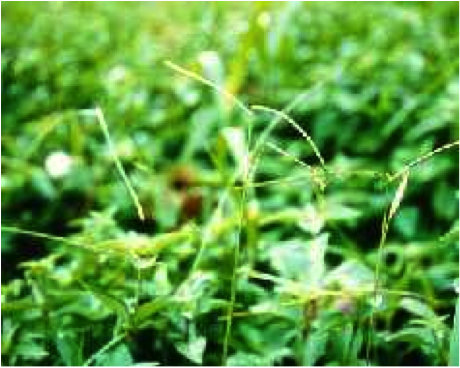Common Name: Sour paspalum, Hilo grass
Family: Poaceae
Description:
Short creeping perennial. Many runners on soil surface, stems often purplish. Leaves pale, smooth but hairy at nodes. Ligules hairy. Inflorescences consist of 2 opposite horizontal spikes (racemes) on a stalk resulting in a “T” shape. Seed round, flat, in 2 rows on each spike. A weed of many crops, orchards, and pastures in the tropics and warm temperate zones of the Pacific, Asia, Africa, and the Americas. From the Greek paspalos, for a millet; conjugatum, Latin for connected, probably for its many runners.
Distribution:
Native to the New World tropics. Widespread throughout the world and Hawai‘i in mesic and
wet areas. A weed of humid pastures and open areas of conservation lands. Noticed in Hilo about 1840.
Environmental impact:
Smothers herbs and tree seedlings. Unpalatable to cattle.
Management:
Can be displaced in pastures by taller forage grasses and controlled grazing. Sensitive to glyphosate and imazapyr, both nonselective herbicides, the latter with some residual soil activity.
Soil requirements:
P. conjugatum is adapted to a wide range of soils.
Propagation and planting:
P. conjugatum is propagated from prostate culms, using 2-3 nodes per cutting.
Growth and development:
The germination percentage of P. conjugatum seed is usually low. Flowering commences 4-5 weeks after seedling emergence and it continues to flower year round. New shoots develop at every rooted node.



